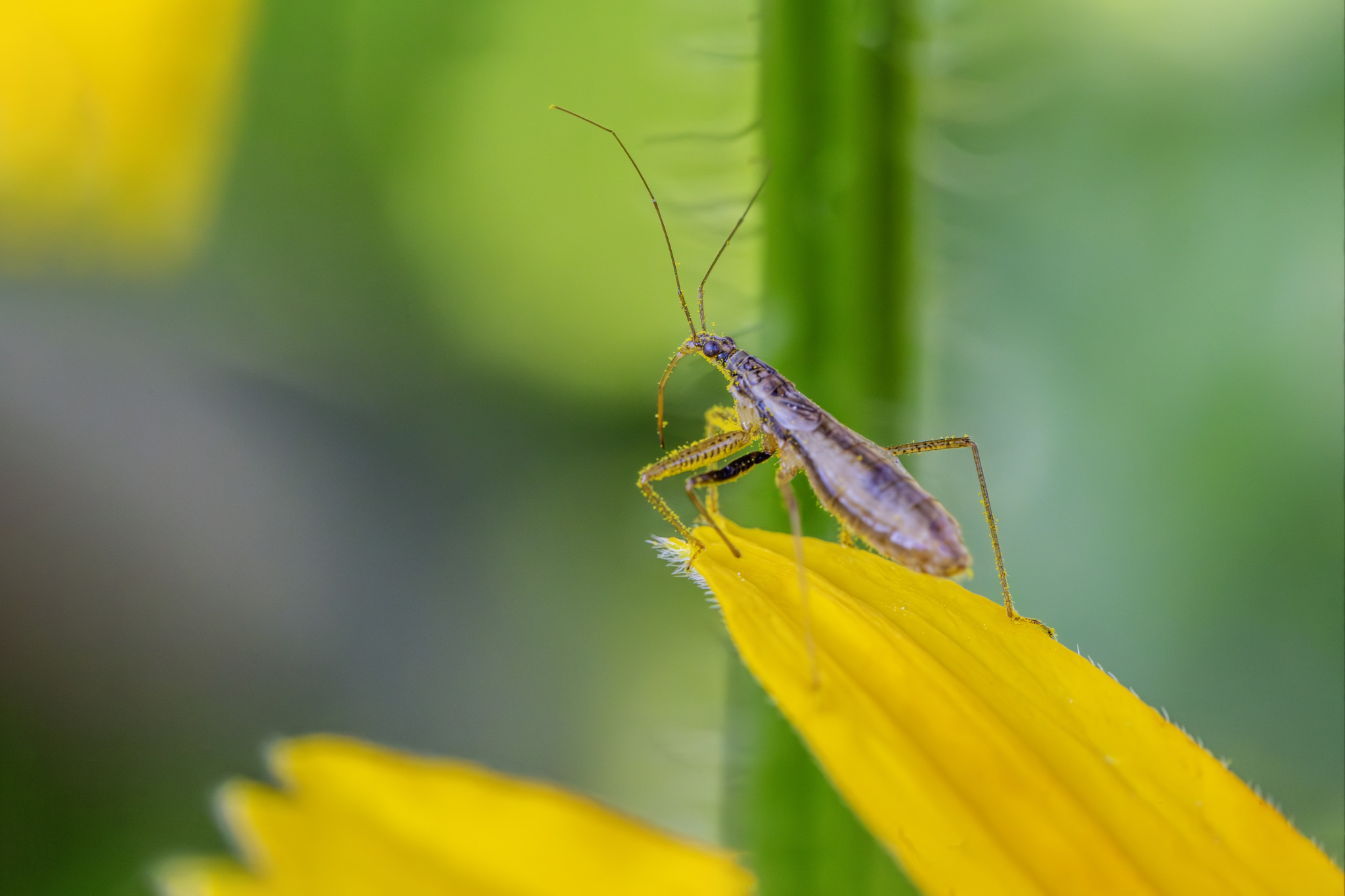🪲 March Damsel Bug (Nabis limbatus)
The March damsel bug (Nabis limbatus) is a small, slender predatory insect in the family Nabidae, known as damsel bugs. These agile hunters play a vital role in ecosystems by controlling populations of other small insects.
🔍 Identification & Appearance
- Length: 6–8 mm
- Coloration:
- Varies from brownish to greyish
- Camouflaged well against bark, leaf litter, or low vegetation
- Body:
- Long and narrow with a soft, elongated abdomen
- Raptorial front legs adapted for grasping prey
- Wings:
- Well-developed, often showing a membranous texture toward the tip
- When at rest, wings are folded flat over the body
🌍 Distribution & Habitat
- Widespread across Europe, especially in northern and central regions
- Found in a variety of damp or moist habitats, such as:
- Woodland edges
- Meadows and marshes
- Wet grasslands
- Mossy or peaty soil areas
🧬 Life Cycle & Behavior
- Seasonal activity:
- Named for being one of the earliest damsel bugs to emerge — active from early spring (March)
- Development:
- Hemimetabolous (incomplete metamorphosis): egg → nymph → adult
- Nymphs resemble adults but lack fully developed wings
- Overwinters as eggs laid in plant tissues or soil
🐜 Diet & Ecological Role
- Carnivorous predator:
- Feeds on aphids, caterpillars, small beetles, and other soft-bodied insects
- Uses piercing-sucking mouthparts to immobilize and consume prey
- Important natural pest control agent in both wild and cultivated environments
🛡️ Conservation Status
- Not threatened — considered widespread and locally common
- Benefited by:
- Biodiverse plant communities
- Reduced pesticide use
- Sensitive to habitat drainage and agricultural intensification
🌟 Interesting Facts
- Damsel bugs like Nabis limbatus are often mistaken for assassin bugs, but they lack the more heavily armored appearance
- Despite their small size, they are voracious predators, taking down prey nearly their own size
- The early spring activity of the March damsel bug helps kickstart predation in ecosystems just as other insects begin emerging
🧭 Summary
The March damsel bug (Nabis limbatus) may be small, but it plays a big role in natural pest control. Emerging early in the year and patrolling low vegetation for prey, this nimble predator is a quiet yet essential component of healthy European ecosystems — especially in wetlands, meadows, and wooded clearings.
Visited 41 times, 2 visit(s) today
Views: 423
Subscribe to the newsletter:
